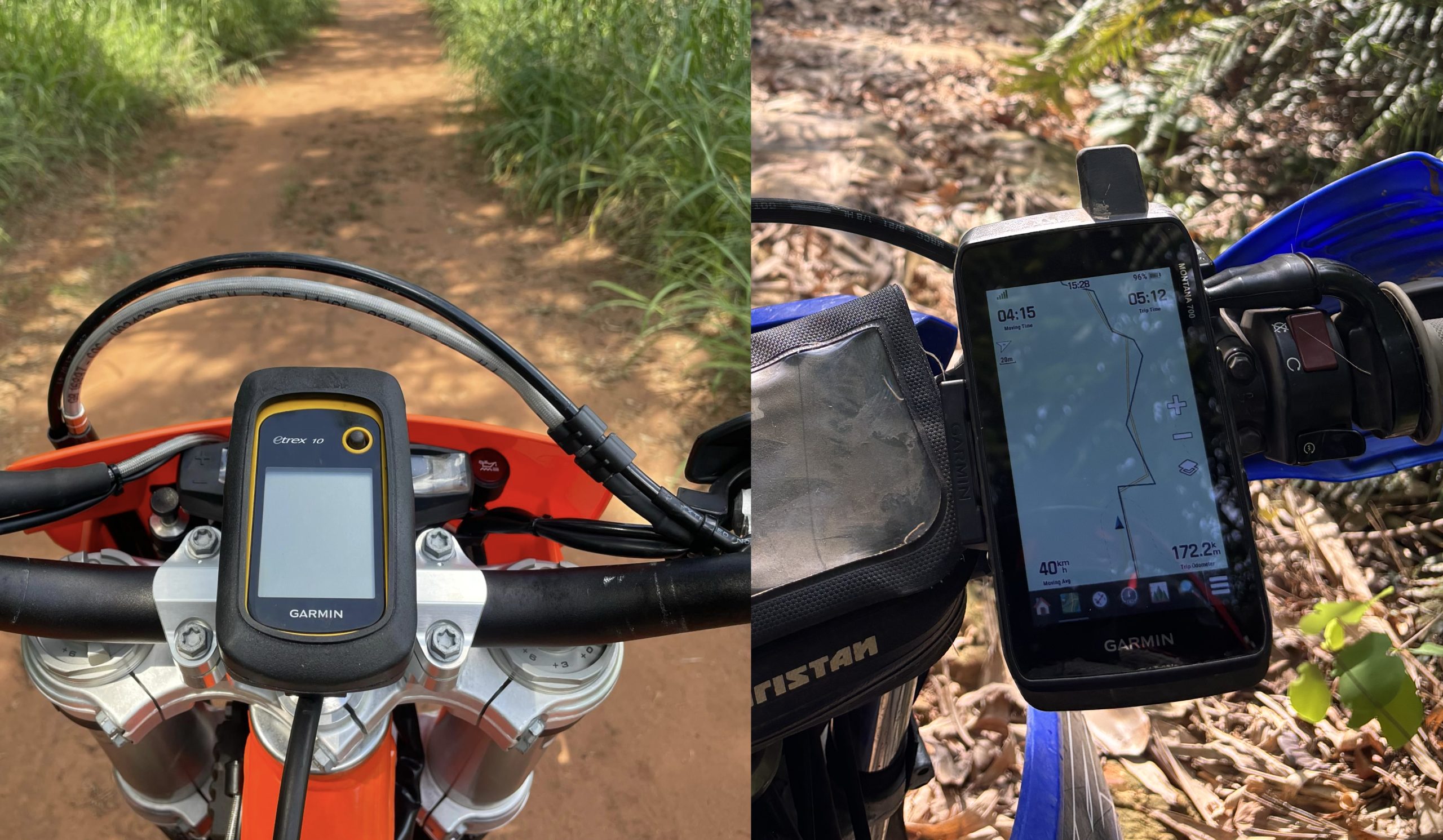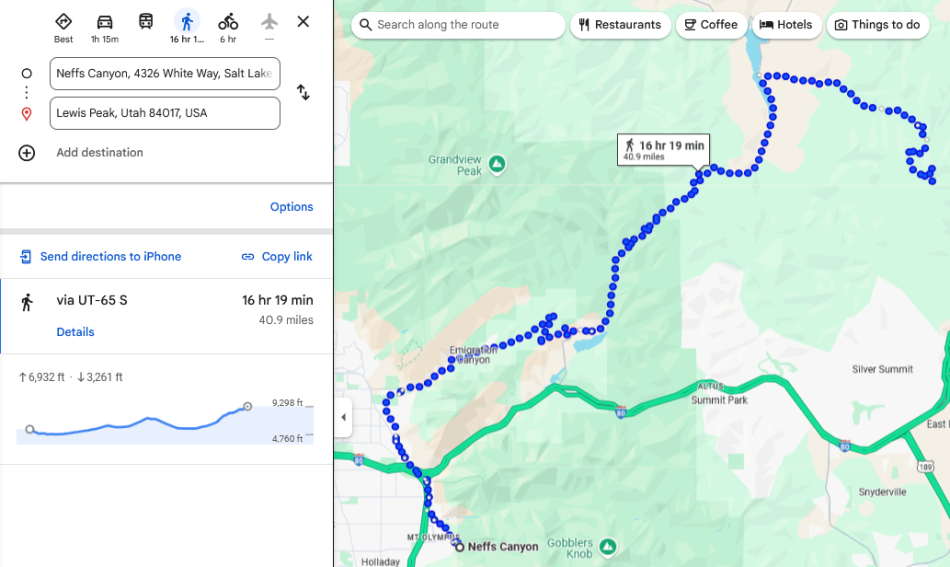When looking for a rugged GPS unit to use outdoors, there seems to be no way around the Swiss branded devices from Garmin. It seems to be the only serious company in this field. When looking closer at their lineup we come across two popular product lines which represent rugged GPS navigation, the Montana line and the eTrex line. In this post we look at the differences as well as the pros and cons for the use of adventure riding.
To compare the two product lines we chose the eTrex 22 and the Montana 700. There are multiple versions of each series, the eTrex 32x comes with an additional compass and altitude function and the Montana 700i comes with the inReach functionality. For our purpose we chose the base units as we believe they are sufficient for sole navigation purposes.
Related: Check out our Comprehensive Guide on Off-Road Motorcycle Navigation where we cover all topics from planning to execution.
Table of Contents
Price
The eTrex 22 sells for 200 USD while the Garmin Montana 700 is yours for 600 USD.
With a hefty 400 USD price difference, it becomes obvious quickly that the devices target different consumers. The eTrex is clearly priced much cheaper, but does it lack in the other categories? Let’s find out…
Size & Weight
eTrex: 2.1″ x 4.0″ x 1.3″ (5.4 x 10.3 x 3.3 cm) ; 5 oz (141.7 g) with battery
Montana: 3.4″ x 7.2″ x 1.3″ (8.76 x 18.30 x 3.27 cm) ; 14.0 oz (397 g) with battery
The eTrex is the much lighter product, weighing only a third of the hefty Montana. Also size-wise the eTrex is much more compact, and more handy to carry. This might be one important factor to some users. People who value weight-savings over the other categories should stop here, and go with the eTrex.
Display
eTrex: 2.2″ transflective, 240×320 px, button operation
Montana: 5″ transflective, 480×800 px, touchscreen
Due to the form factor, the Montana obviously comes with a much larger 5 inch display which can be operated by touchscreen, while the eTrex comes with a moderate screen size of only 2.2 inches and is only operable by buttons and a small joystick on the front of the product. Users who want a more “smartphone-like” experience, should go with the Montana, otherwise the eTrex could be a great alternative.
Robustness
eTrex: IPX7, acrylic lense material
Montana: IPX7, chemically strengthened glass, MIL-STD-810 standard (thermal, shock, water and vibration resistant)
Depending on the application the robustness can be a crucial factor. While both devices come with a IPX7 rating, indicating that they can withstand full submersion of up to 1 meter for 30 minutes, only the Montana comes with the MIL-STD-810 rating for extreme thermal, shock, water and vibration resistance. So the Montana might have the lead in this category.
Battery life
eTrex: 25h from 2 AA batteries
Montana: 18h from lithium battery pack or 3 AA batteries (only with separately purchased AA battery pack)
The eTrex can power the device longer with less battery capacity, but the Montana comes with a chargable lithium-ion battery pack which is designed to be charged continously, making up for the shorter battery life. Read further for compatible mounting options in conjunction with power supply.
Mounting options
eTrex: J-Mount, very durable, not the most userfriendly (85 USD), RAM mount (15 USD for cradle)
Montana: Powered AMPS RAM mount (150 USD)
Both models have available options to mount it on a motorcycle’s handlebar. The eTrex is compatbile with the J-Mount from a South African start-up that is popular among enduro racers, since it provides extreme robustness, as well holds the device tight in place. The cost for the single J-Mount ist around 85 USD. The operation can be a bit fiddly because of the snug fit. Another option for the eTrex line is a RAM cradle, which is a great option as well and costs only 15 USD and is compatible with the standard RAM connectors. The Montana can be mounted with the powered AMPS mount which will also solve the problem of supplying the device with power during the ride and comes with a price tag of 150 USD.
Memory
eTrex: 8GB, memory card up to 32GB extra, 10,000 waypoints, 200 gpx routes
Montana: 16GB, memory card up to 32GB extra, 20,000 waypoints, 250 gpx routes
On the Montana, everything is bigger – also the storage capacity. It comes with 16GB internal storage compared to the 8GB of the eTrex. But since both products can be extended with a 32GB micro-SD card, which should be plenty for most users, this should not be a decisive factor. The eTrex supports up to 10,000 waypoints and 200 gpx routes, while the Montana supports up to 20,000 waypoints and 250 gpx routes. If this is important to you, then you can stop here and obt for the Montana. However, we find the 10,000 waypoints and 200 routes plenty for most use cases.
Conclusion
We now learnt that the devices couldn’t be more different, and differ in almost every aspect. The eTrex is the lightweight, compact GPS device that focuses on the core functions and comes therefore at a much lower price point. The eTrex line is very popular among enduro racers as weight plays an important role, and functions and battery life is mostly sufficient for race applications.
On the other hand, the Montana is the flagship model that comes with a huge touchscreen, super-rugged design and a well designed powered mounting cradle. For customers who don’t mind spending more, and can handle the extra weight, the Montana is a great choice and essential piece of equipment for adventure riding.





One Comment